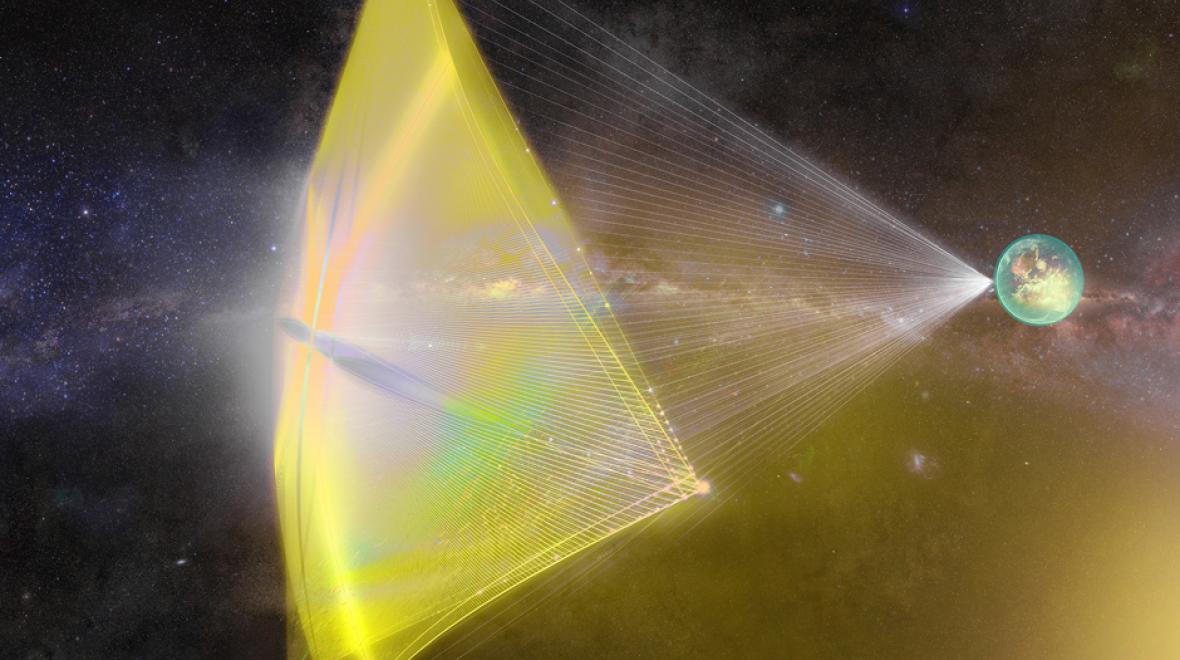By subscribing, you agree to our Terms of Use and Policies You may unsubscribe at any time.
NASA has confirmed the launch date for its groundbreaking Advanced Composite Solar Sail System (ACS3) mission.
The ACS3 mission is targeting a launch on Wednesday, April 24 aboard a Rocket Lab Electron rocket. The small satellite launch vehicle will take off from Rocket Lab’s Complex 1 on the Mahia Peninsula, New Zealand.
ACS3 will continue what The Planetary Society started in 2021 with LightSail 2, demonstrating the feasibility of solar sails for ambitious, far-reaching space missions.
Featured Video RelatedWhile NASA says solar sails could enable low-cost missions to the Moon and Mars, some scientists believe they could send a probe to another star system.
NASA’s solar sail demonstration mission
If all goes to plan on April 24, Rocket Lab’s Electron vehicle will deploy NASA’s CubeSat approximately 600 miles (965 km) above Earth’s surface.
The ACS3 mission will fly at more than double the altitude of the International Space Station (ISS). At that altitude, NASA says the force of sunlight on the sail will be enough to overcome atmospheric drag and increase its altitude.
All it needs is the “equivalent to the weight of a paperclip resting on your palm”, NASA explained in a statement.
After launch, there will be a two-month initial flight phase, where NASA’s ground team will check the CubeSat’s subsystems are working as intended. Once that is complete, the CubeSat will deploy its reflective solar sail.
For the following weeks, it will then perform several pointing maneuvers to demonstrate orbit raising and lowering.
LightSail missions to Proxima Centauri
In 2019, the Planetary Society’s LightSail 2 mission demonstrated for the first time that a LightSail could be used to elevate a small satellite’s orbit around Earth.
The LightSail used an incredibly lightweight mylar material. Spread out, it captured enough photons from the Sun to propel itself upward.
According to NASA’s statement, the ACS3 mission “sets out to prove its ability to sail across space, increasing access and enabling low-cost missions to the Moon, Mars, and beyond.”
In fact, some of the most ambitious space mission concepts to date are working on taking LightSails to the next level.

An artist’s impression of Breakthrough Starshot. Source: Breakthrough Initiatives Breakthrough Starshot, for example, aims to train a million lasers on a LightSail probe so it can reach our nearest star system, Proxima Centauri, in our lifetimes.
The mission was proposed in 2016 by Breakthrough Initiatives, a science program founded by Israeli billionaires Yuri and Julia Milner, with backing from Mark Zuckerberg and Stephen Hawking.
Space Initiatives Inc. and the Initiative for Interstellar Studies (i4is), meanwhile, recently proposed a similar mission to Proxima Centauri. Instead of sending one probe, however, it would send a whole swarm of LightSails to uncover the mysteries of the nearest solar system to Earth.
顶: 64824踩: 3
Sailing on sunlight: NASA ACS3 solar sail mission to launch next week
人参与 | 时间:2024-09-22 11:42:26
相关文章
- North Korea says it conducted important test to develop multiple warhead missile
- 本月中旬免费来听课 培训合格可申请小额贷款
- 我省今年高考考试科目仍按“3+X”设置
- 抗通胀 银行理财产品成“香馍馍”
- 雨城区疾控中心提示:科学补碘 防治碘缺乏病
- OK, I admit some TikTok recipes are actually kind of great
- 我省今年高考考试科目仍按“3+X”设置
- How sports treat the Russia problem
- Best smartphone deal: Google Pixel 8a on sale for $449 at Amazon
- 本月中旬免费来听课 培训合格可申请小额贷款






评论专区